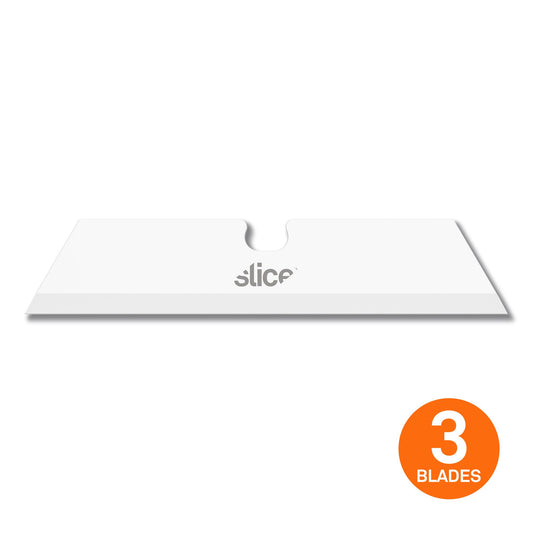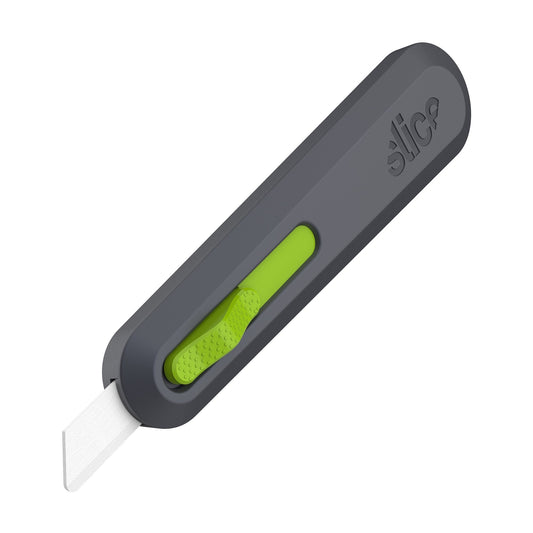SKU #10550
Cutter manuale
Il cutter manuale Slice® 10550 possiede una delle tre impugnature disponibili. Offre cinque posizioni per la lama, consentendo all’utilizzatore di scegliere la profondità di taglio di cui necessita. Il processo di produzione brevettato di Slice consente di realizzare una lama in ceramica a prova di dita. Come i nostri altri prodotti, il cutter manuale di sicurezza è caratterizzato da un’impugnatura in nylon con fibra di vetro duratura e da una lama sostituibile a lunga durata. Le lame in ceramica Slice non producono scintille, non sono magnetiche e sono chimicamente inerti. Non si arrugginiscono mai e sono sicure fino a 1600 gradi Celsius.
- Tipo di impugnatura: 5 posizioni
- Impugnatura in nylon con fibra di vetro duratura
- Lame compatibili: 10526, 10528
- Lama a prova di dita che rimane affilata 11 volte più a lungo
- Riduce gli incidenti, diminuisce i costi
- Non produce scintille, non conduce elettricità
- Per mancini e destrorsi
- Cordoncino per tenere lo strumento a portata di mano
- Sostituzione lama senza uso di strumenti aggiuntivi
- Meno sostituzioni della lama = meno incidenti
- SKU #10550
Great for:
- Removing plastic packaging
- Opening cardboard boxes
- Opening packages coming through the garage
- Stripping cables
Product Specifications
Product Specifications
Cutting Depth:
Material: GFN, POM, Carbon Steel, zirconium oxide
Dimensions: L x W x H
Weight: 0.094 kg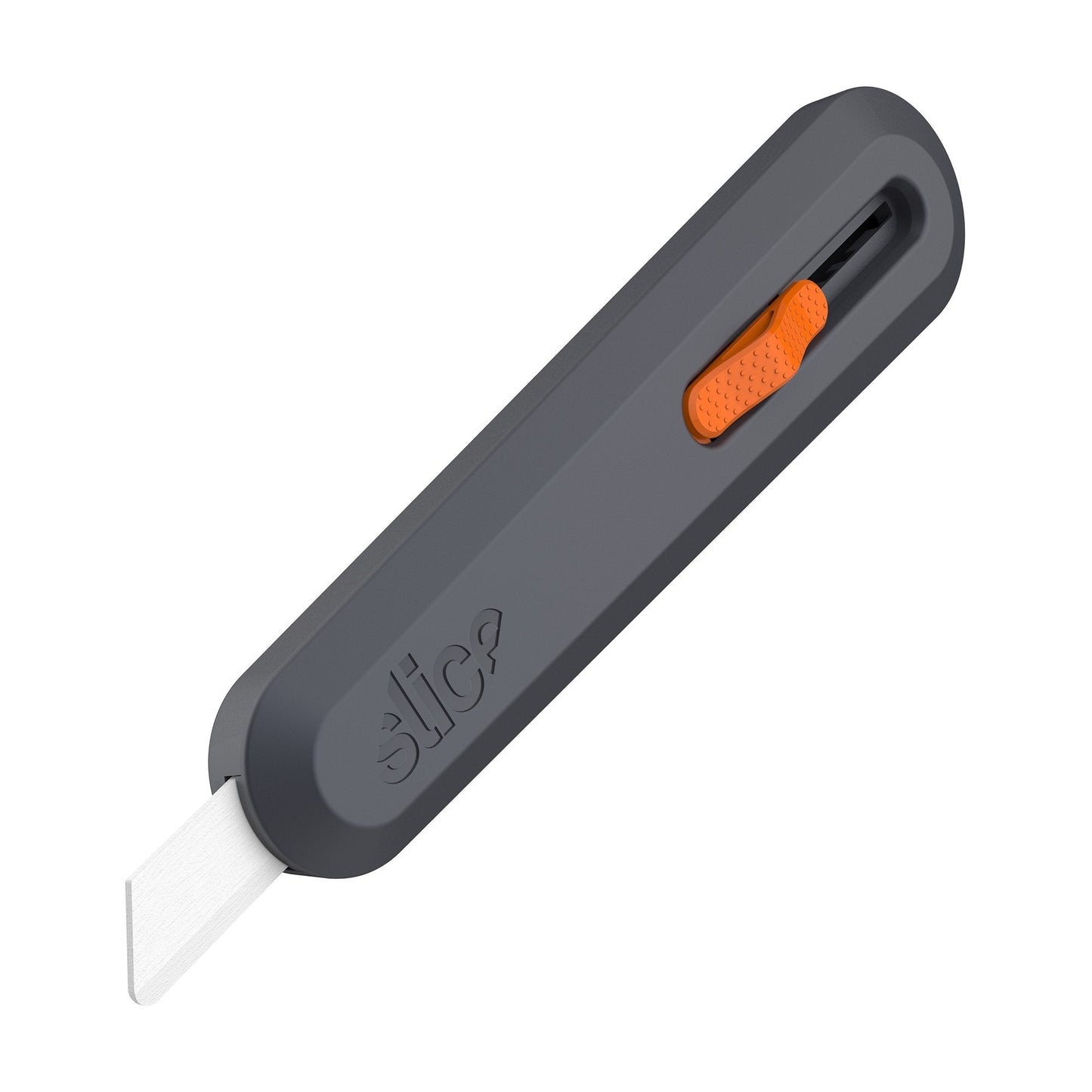
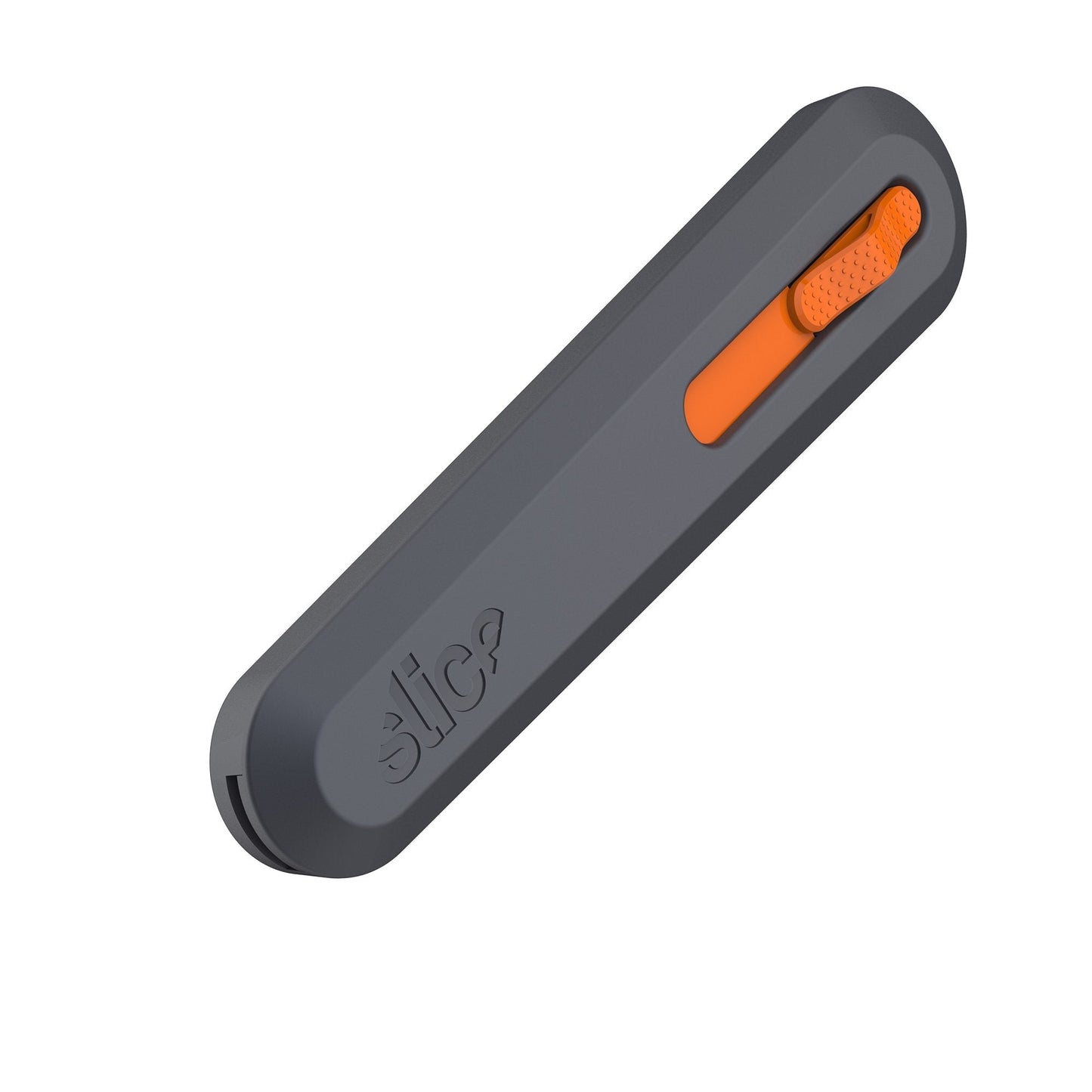
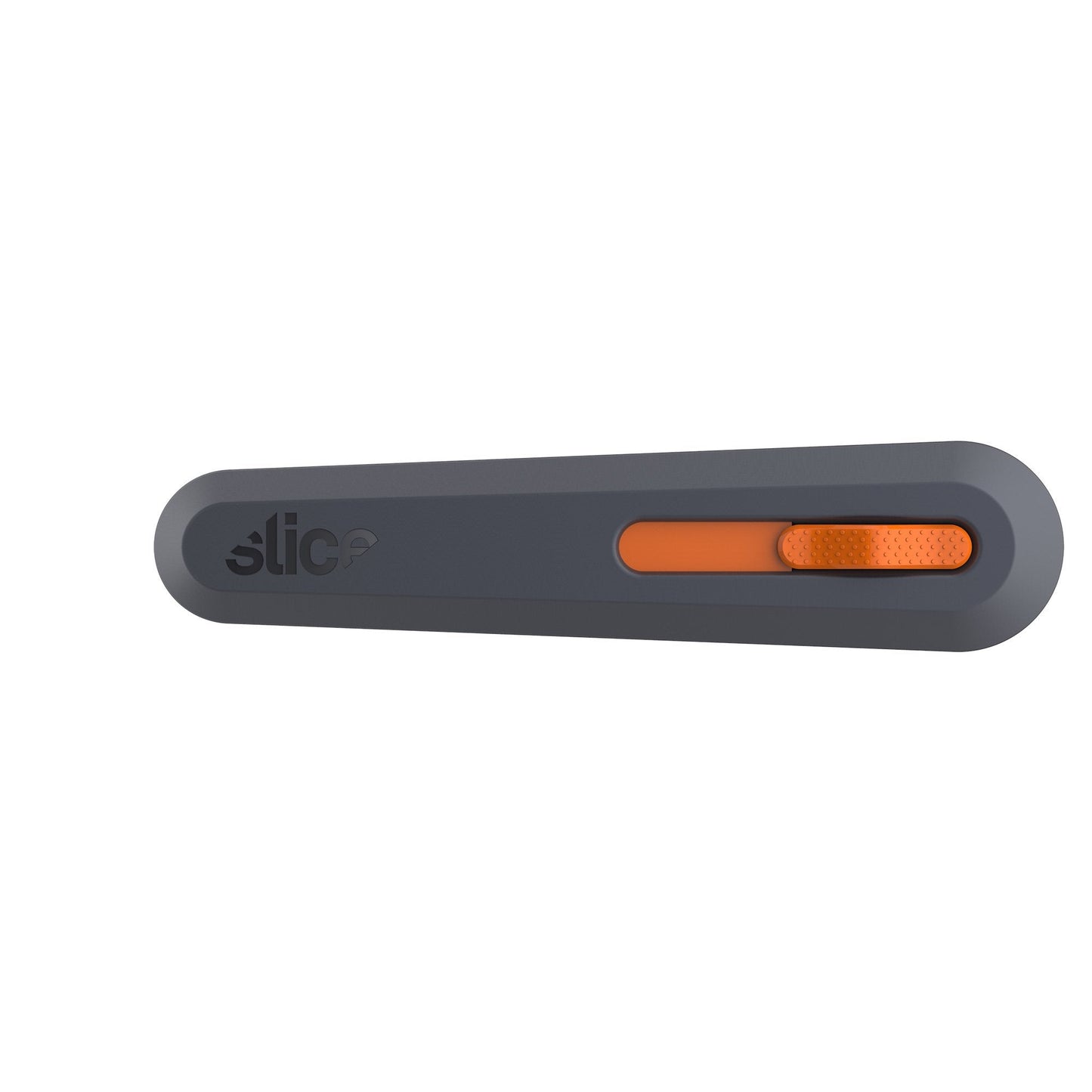
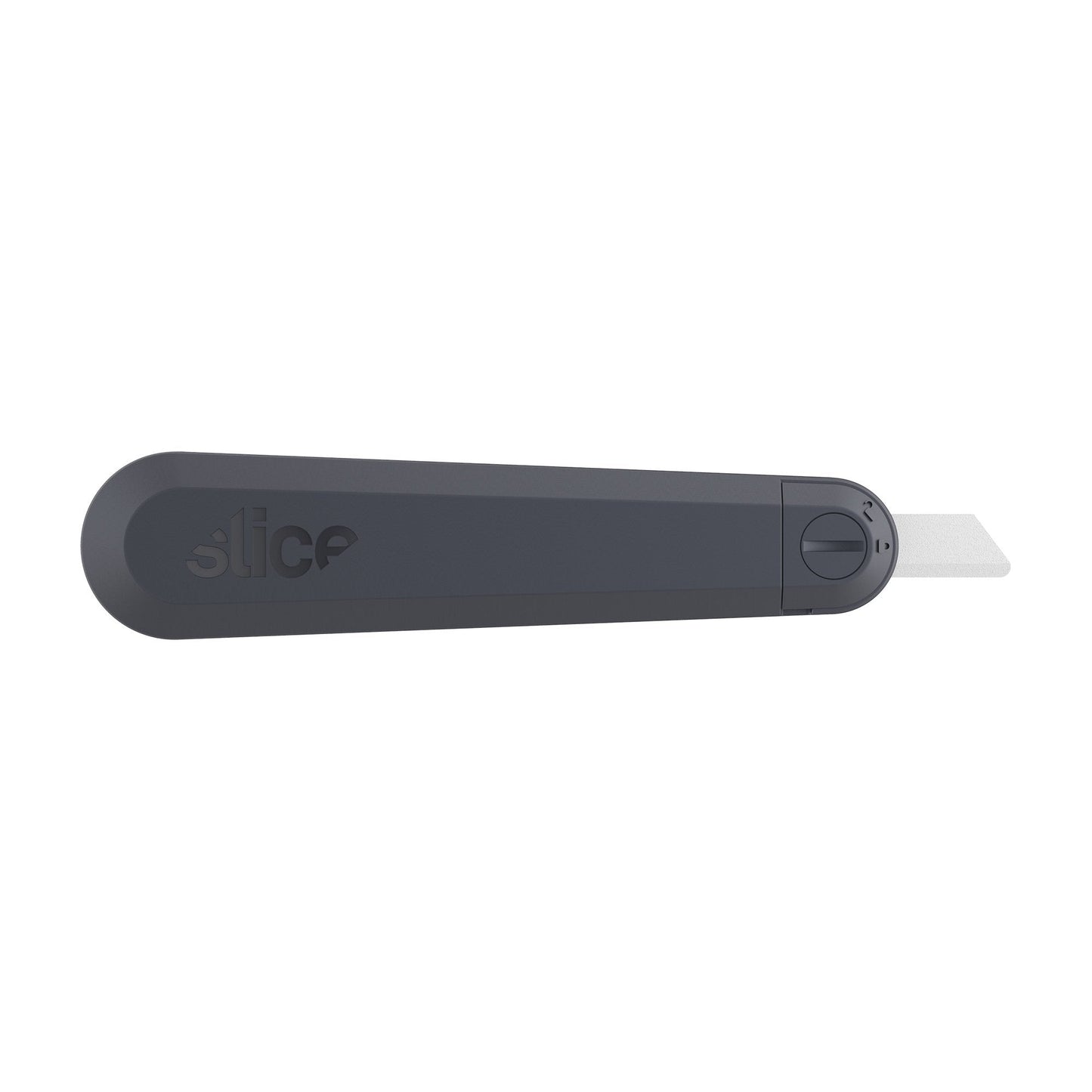
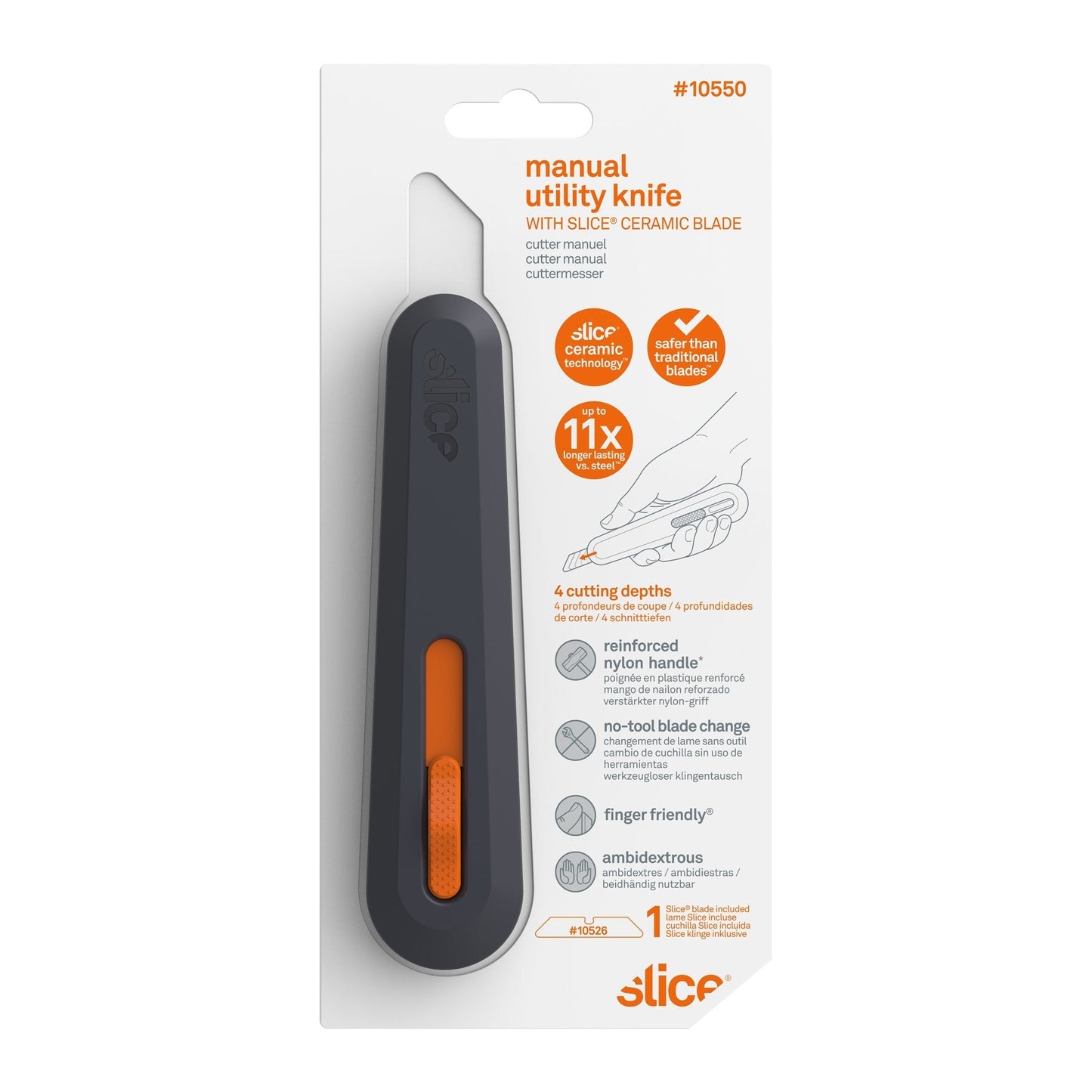
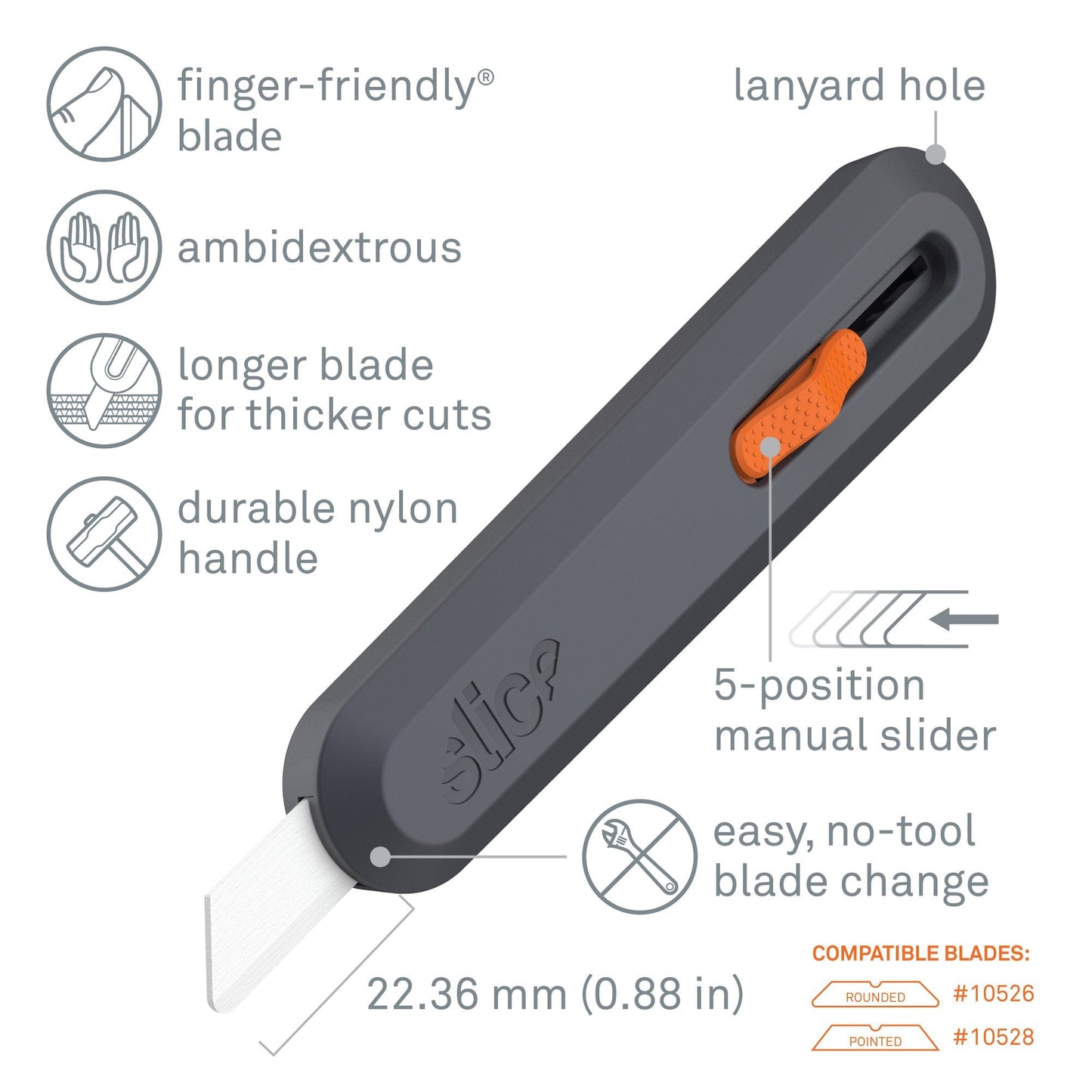
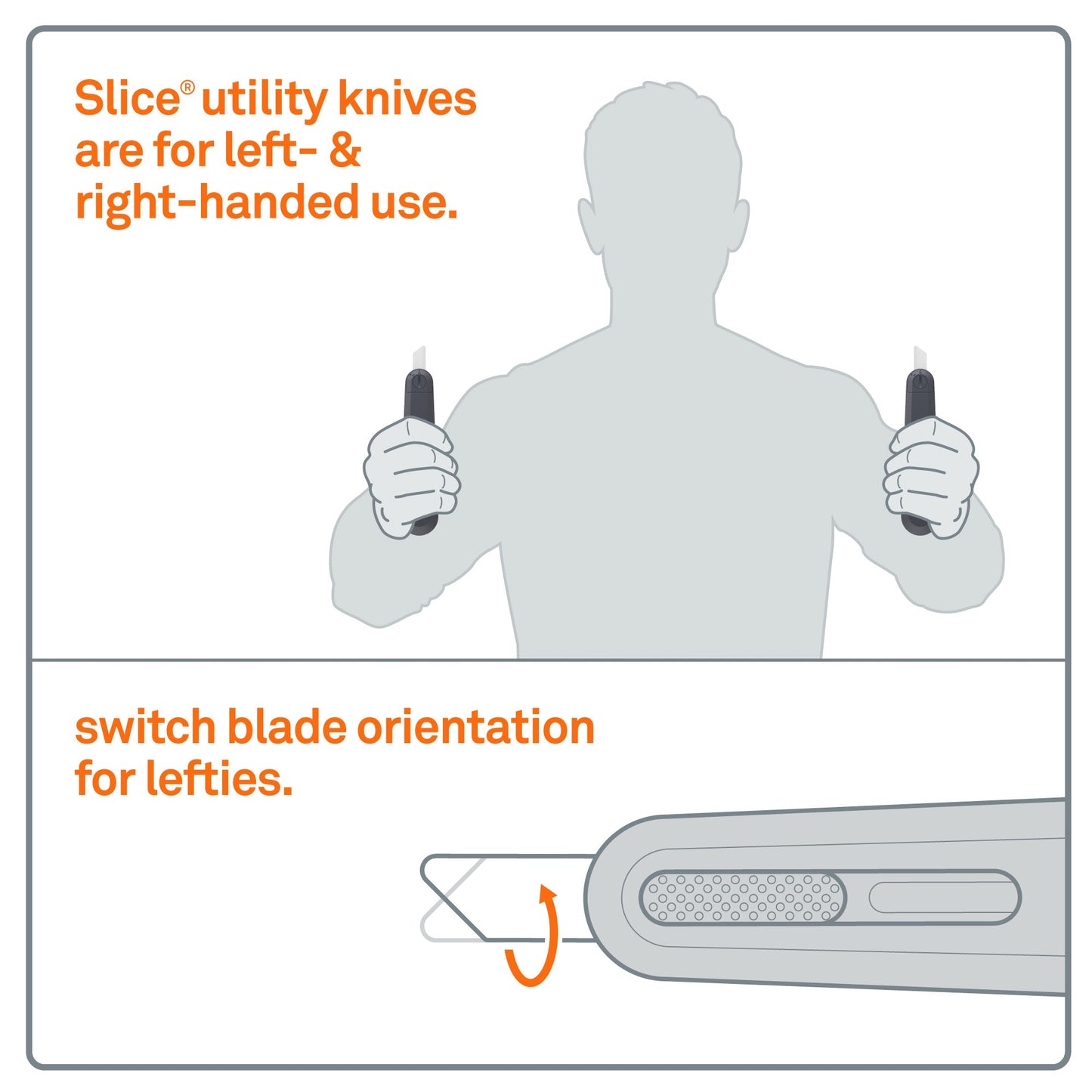
Videos
-
Manual Utility Knife
-
Stripping Wire Insulation: Choose the Safest Tool
-
How to Cut Ceiling Tile: Safety First
-
Cutting Ram Board®
-
How to Cut Super Sacks® Easily and Safely
-
How to Cut Visqueen Reinforced Plastic
-
Blade Replacement for Slice Utility Knives
FAQ
What Is a Utility Knife Used For?
This type of knife is used for a wide variety of tasks and materials, usually ones that require a sturdy, durable tool. Utility knife uses include scraping, piercing, or cutting, and materials include wire, carpeting, nylon straps, and metal sheets.
Is a Ceramic Utility Knife Safer?
A Slice utility knife is a safety tool because our proprietary grind creates a finger-friendly edge that effectively cuts most materials but resists cutting skin. And because advanced ceramics are much harder than steel, Slice blades last, on average, 11.2 times longer than steel blades.
What Kind of Utility Knife Blades Does Slice Offer?
To distinguish our different utility knife blade types, we look at how the blade is integrated with the handle. The Manual Utility Knife offers five fixed positions for blade, allowing the user to choose blade depth and keep the blade extended when it’s not in use. The Auto-Retractable Utility Knife has a slider button that must be engaged in order to extend the blade. This reduces injuries by ensuring that the blade is never left exposed when it’s not in use. Our Smart-Retracting Utility Knife has an added layer of safety. Its innovative technology senses when the blade loses contact with the cutting surface and automatically retracts the blade, even when the user is still holding the slider button.









